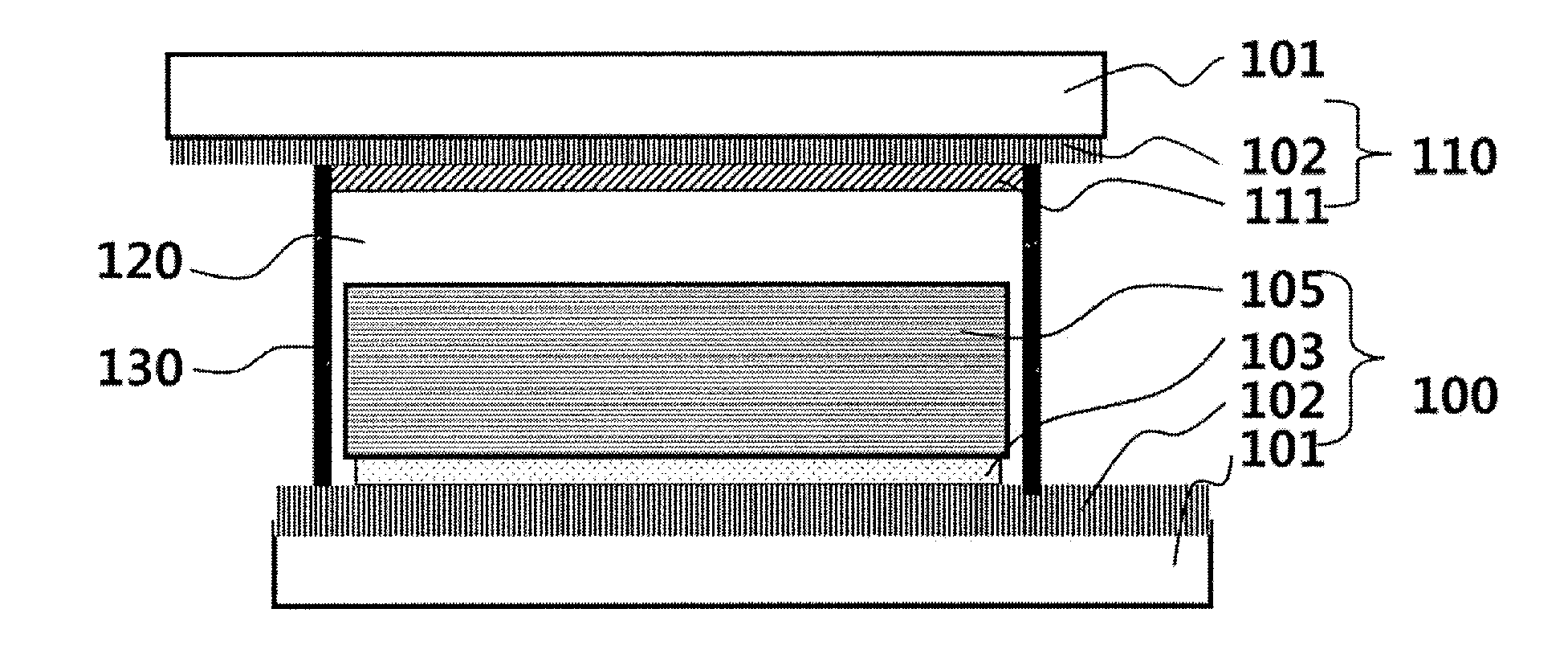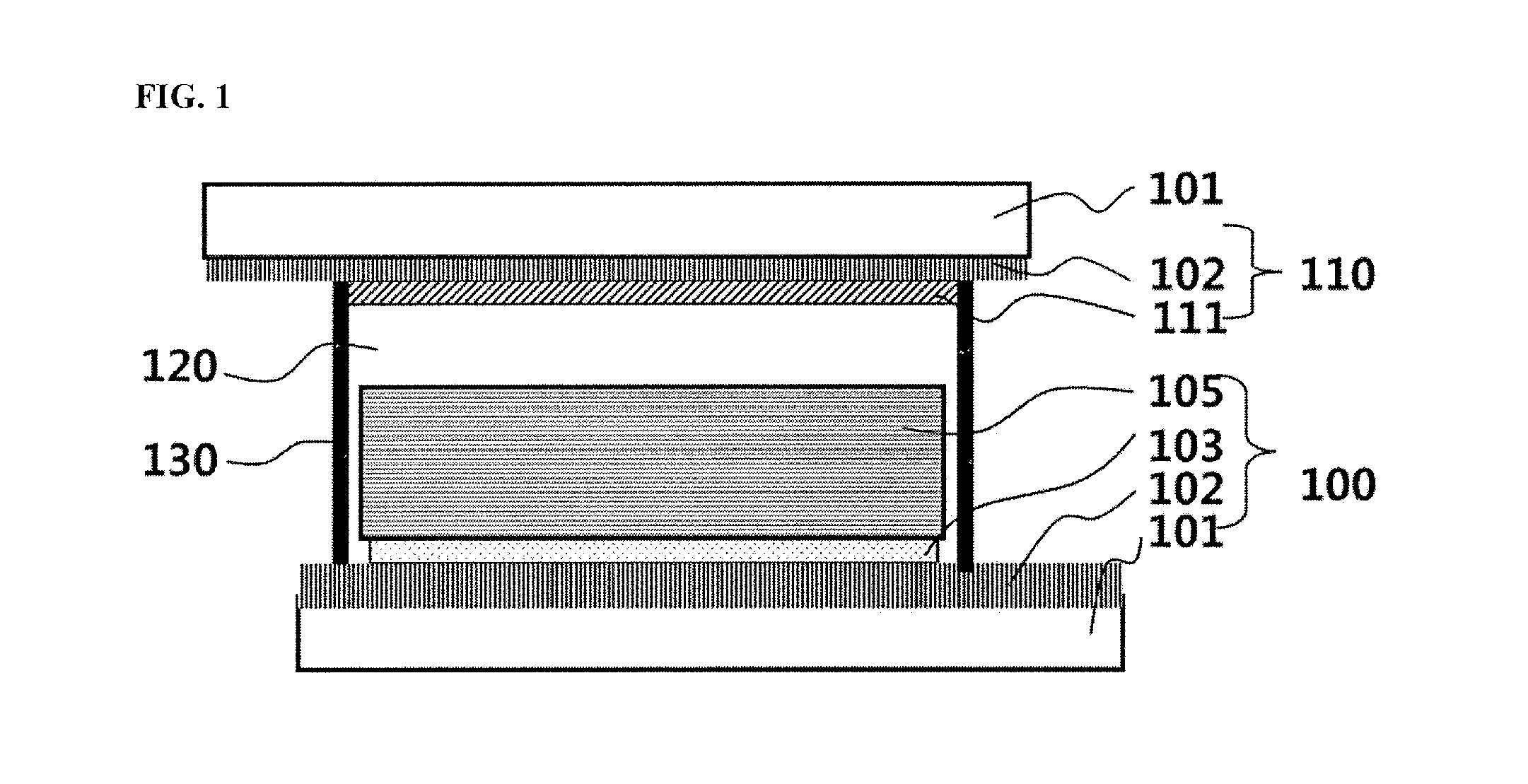Sensitizing dye solution, working electrode for dye-sensitized solar cell prepared using the sensitizing dye solution and dye-sensitized solar cell including the working electrode
a technology of sensitizing dye and working electrode, which is applied in the manufacture of electrolytic capacitors, non-metal conductors, and other directions, can solve the problems of high cost and poor stability, depletion of fossil fuels, and high cost, and achieves high dye adsorption rates, high solar cell efficiencies, and shortened overall processing time
- Summary
- Abstract
- Description
- Claims
- Application Information
AI Technical Summary
Benefits of technology
Problems solved by technology
Method used
Image
Examples
example 1
Preparation of Working Electrode
[0100]0.15 M titanium diisopropoxide bis(acetylacetonate) (Ti(acac)2OiPr2) was spin coated on a conductive glass substrate (FTO, thickness 2.2 cm, 8 Ω / sq., Philkington) and heat treated at 450° C. to form a 100 nm thick titanium oxide thin film. A paste including 18.5 wt % of titanium oxide nanoparticles having an average diameter of 20 nm, 0.05 wt % of ethyl cellulose as a binder, and the balance of terpineol was applied onto the upper surface of the titanium oxide thin film by doctor blade coating, followed by calcination at 500° C. for 30 min to form a 15 μm thick porous film including the metal oxide nanoparticles.
[0101]Meanwhile, 4 mM DPAT was directly dissolved in a 2.0 mM solution of NaRu(4-carboxylic acid-4′-caboxylate)(4,4′-dinonyl-2,2′-bipyridine)(NCS)2) as a sensitizing dye in ethanol. DPAT is an additive necessary to shorten the dye adsorption time. The substrate formed with the porous film was dipped in the sensitizing dye solution contai...
example 2
Fabrication of Solar Cell
[0104]A layer of fluorine-doped tin oxide as a transparent conducting oxide was formed on a transparent glass substrate. A solution of hexachloroplatinic acid (H2PtCl6) in 2-propanol was dropped onto the upper surface of the transparent conducting oxide layer and heat treated at 400° C. for 20 min to form a platinum layer, completing the preparation of a counter electrode as an anode.
[0105]An acetonitrile electrolyte including 1-methyl-3-propylimidazolium iodide (PMII, 0.7 M) and I2 (0.03 M) was injected into a space between the counter electrode and the working electrode prepared in Example 1, and sealed with a polymer adhesive to fabricate a dye-sensitized solar cell.
PUM
 Login to View More
Login to View More Abstract
Description
Claims
Application Information
 Login to View More
Login to View More - R&D
- Intellectual Property
- Life Sciences
- Materials
- Tech Scout
- Unparalleled Data Quality
- Higher Quality Content
- 60% Fewer Hallucinations
Browse by: Latest US Patents, China's latest patents, Technical Efficacy Thesaurus, Application Domain, Technology Topic, Popular Technical Reports.
© 2025 PatSnap. All rights reserved.Legal|Privacy policy|Modern Slavery Act Transparency Statement|Sitemap|About US| Contact US: help@patsnap.com



